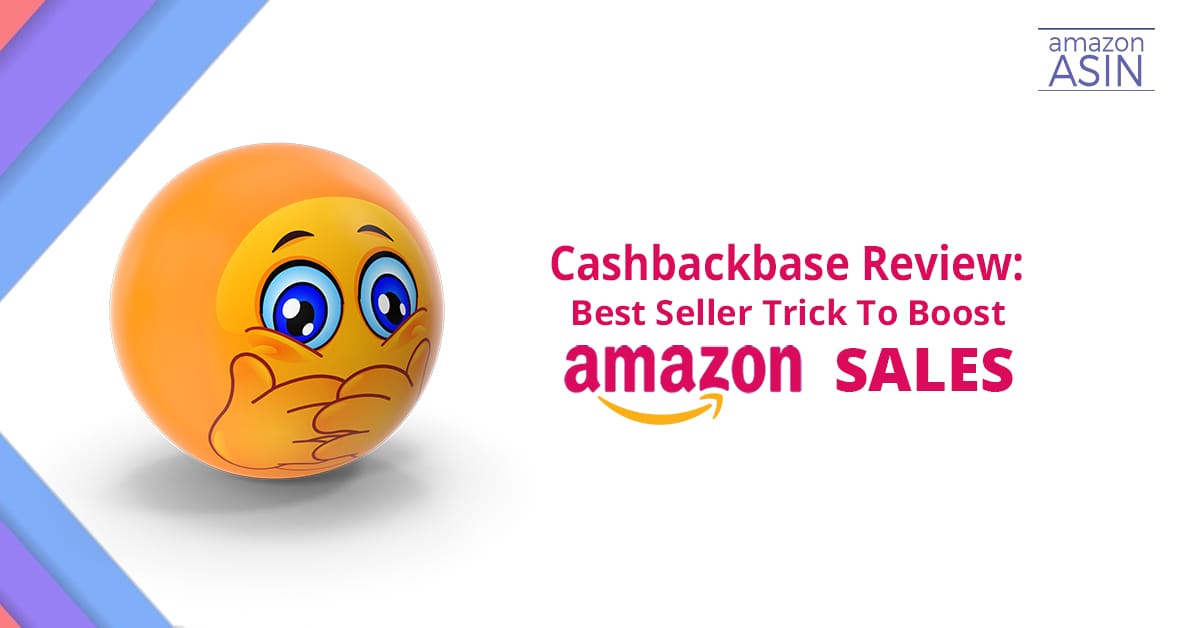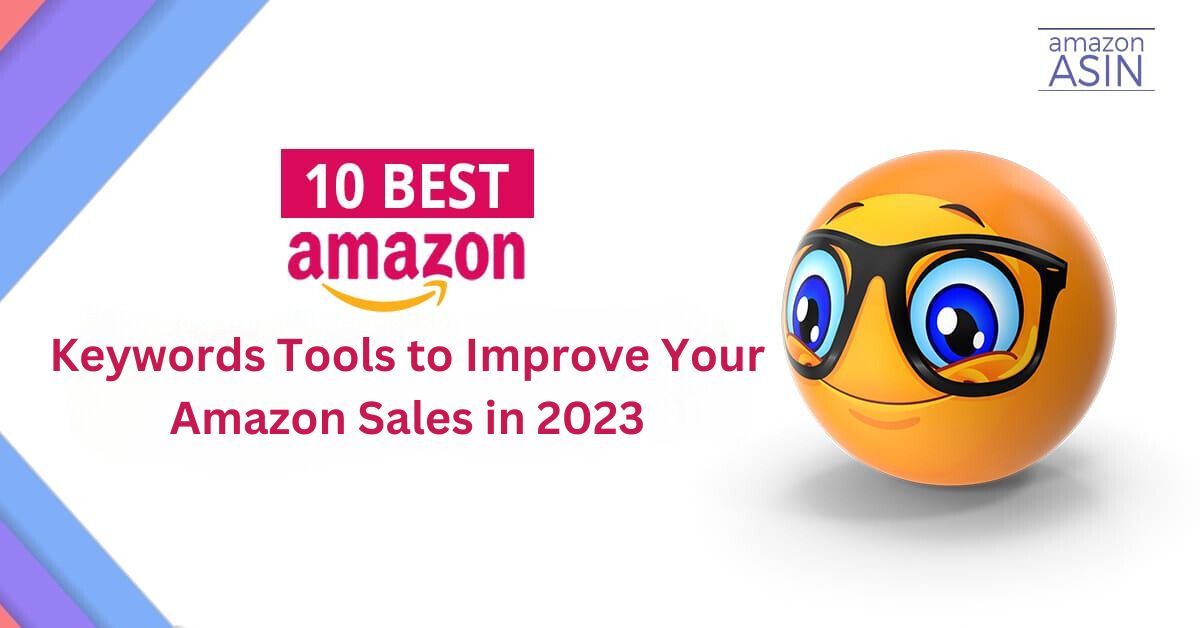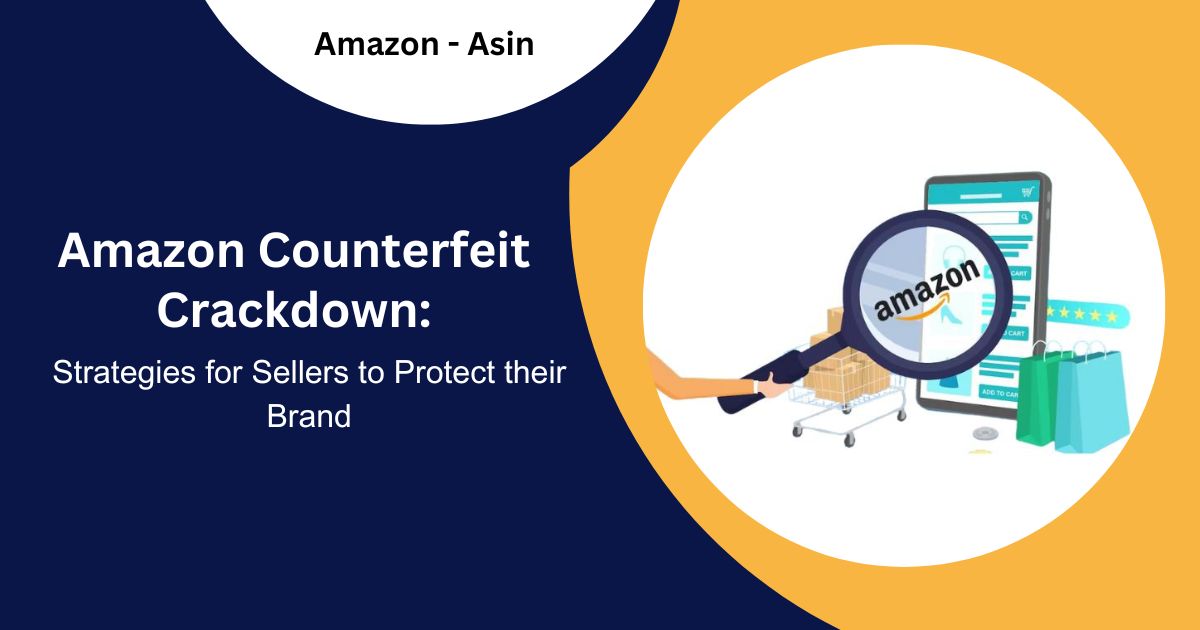Are you looking for ways to boost your sales on Amazon? With millions of products available, standing out can be a challenge. However, utilizing Amazon product attribute targeting can give you a competitive edge.
Amazon is the largest online retailer globally, with millions of customers searching for products every day. To make your products more visible and increase sales, it’s crucial to understand how to effectively use product attribute targeting.
In this strategic guide, we will explore how to leverage Amazon product attribute targeting to optimize your product listings, reach your target audience, and ultimately boost your sales. By implementing these tactics, you can increase your visibility and improve your chances of success in the competitive world of Amazon sales.
A Quick Peek into the Content:
- What are Amazon product attributes Targeting?
- Understanding the benefits of product targeting on Amazon
- How to identify the right product attributes for targeting
- Best Strategies for Product Attribute Targeting
- Step-by-Step Guide to Setting Up a New Product Targeting Campaign on Amazon
- Optimizing your product targeting ads on Amazon
- Utilizing negative product targeting in Amazon
- Conclusion
What are Amazon product attributes Targeting?
Amazon product attribute targeting allows you to target potential customers based on the attributes of products they’ve viewed or purchased. This powerful targeting option allows you to reach audiences that have expressed interest in specific types of products.
For example, say you sell hiking boots. You could create an ad targeted at customers who have recently viewed or purchased products like:
- Backpacks
- Hiking socks
- Trail snacks
- Camping tents
By targeting these related product attributes, you’ll reach people actively shopping for hiking gear and more likely to be interested in your boots.
How does attribute targeting work?
Amazon uses the product attributes and categories to determine a customer’s interests and likely future purchases. When a customer views or buys a product, Amazon captures attributes like:
- Brand
- Price
- Category
- Color
- Size
- And more
Amazon then uses these attributes to build an interest profile for each customer. Your ads can target specific attributes that match your product to reach the most interested shoppers.
Why is Amazon Attribute Targeting so effective?
Attribute targeting works so well because it allows you to reach high-intent customers at the perfect moment. By targeting recent views and purchases of complementary products, you’ll reach shoppers:
- Already primed for a purchase in your product category.
- Actively researching and comparing options.
- Ready to buy from a brand they trust.
This precision targeting results in higher click-through rates, lower costs, and increased sales. While broad targeting casts a wide net, attribute targeting uses a precision rifle to reach only the most promising prospects.
Understanding the benefits of product targeting on Amazon
On a platform as massive as Amazon, strategically optimizing your product listings is key to driving more traffic and boosting sales. Targeting your products to the right audiences can make a huge difference.
Reach More Potential Customers
By selecting product attributes to target your listings to, you open them up to more shoppers who are specifically searching for those Amazon product attribute. If you’re selling a waterproof fitness tracker, for example, targeting attributes like “waterproof”, “fitness”, and “activity tracker” would expose your listing to anyone searching those terms.
Higher Conversion Rates
When shoppers land on a listing that precisely matches what they were searching for, they’re more likely to buy. Targeting helps ensure your listings are shown to those with a high purchase intent for that type of product. Studies show Amazon product attribute targeting can increase conversion rates by up to 25%.
Improved Ranking
The more relevant your listing is to searchers, the higher Amazon will rank it in results. Targeting product attributes helps establish relevancy, which translates to better ranking. The higher your listing ranks, the more visibility and traffic it will get.
Valuable Insights
The attributes you target also provide insights into what customers are searching for and interested in. You can use this data to make informed decisions around things like product development, bundling, and marketing. The attributes driving the most traffic to your listings are clearly resonating with your target audience.
How to identify the right product attributes for targeting
To boost your sales on Amazon through product attribute targeting, you first need to determine which attributes are most relevant for your products. Some attributes, like brand, size or color, may seem obvious. But dig deeper—there are more niche attributes that could help you reach very specific segments of buyers.
Focus on your product category
Start by evaluating the standard attributes used to describe products in your category. For books, this includes attributes like author, publication date, genre and language. For clothing, consider attributes such as style, pattern, neckline and sleeve length. Choose 3-5 of the most distinguishing attributes for your products. These will be the attributes you want to target.
Consider your customer base
Think about the types of customers who buy your products. What attributes do they commonly filter or sort by? If you sell children’s toys, customers may filter by age range, brand and toy type. For gardening tools, attributes like tool type, blade size and handle material are likely to resonate with buyers. Choose attributes that align with how your target customers shop.
Check competitor’s listings
See what attributes your competitors are using in their product listings and target those same attributes. Some competitors have already done research to determine what attributes resonate most with their shared customer base. You can piggyback off their work. Look for attributes they prominently feature, especially those used in product titles, bullet points and enhanced product descriptions.
Analyze your sales data
If you already have sales data, dig into it to detect patterns. Are certain attributes associated with higher sales volumes or conversion rates? For example, you may find products targeting the “mystery” or “science fiction” genre sell very well for your books. Or clothing in “petite” and “plus” sizes could be top sellers. Let data-driven insights guide your attribute targeting.
With the right Amazon product attributes identified and targeted, you’ll be poised to boost sales on Amazon. Keep testing and optimizing to reach the most potential buyers and truly master the art of attribute targeting.
Best Strategies for Product Attribute Targeting
Identify your best selling products
Take a look at your sales data to see which products are generating the most revenue and selling the fastest. These are your winners that you’ll want to focus on for targeting. See if there are any common attributes among these products, like a specific brand, size, color or other feature. These attributes are resonating with your customers and driving sales.
Research customer reviews and questions
Dig into the reviews and questions on the product pages for your bestsellers. Look for any mentions of attributes that customers say they particularly liked or were interested in. For example, if customers frequently call out a product’s durability or ease of use, those are attributes you’ll want to highlight in your targeting. Pay attention to any attributes that come up again and again.
Choose highly searched attributes
In addition to attributes mentioned in reviews, you’ll want to target attributes that customers are actively searching for. Use a keyword research tool to see which product attributes and related terms are most searched for in your category. The more searched an attribute is, the more customers are interested in and looking for products with that attribute. These highly searched attributes should be priorities in your targeting strategy.
Test and optimize different attributes
Start testing different attributes in your product targeting to see which ones resonate most with your customers. You might target attributes like brand, size, color, features, materials or certifications. Measure which attributes drive the most traffic to your product pages and ultimately the most sales. Then double down on the attributes that are performing the best, and consider dropping or revising any underperforming attributes.
Continuously optimizing your product attribute targeting based on sales data, customer feedback and search trends will help boost visibility of your bestselling products. And the more targeted traffic you drive to those products, the more your sales and revenue will grow. With the right combination of product attributes highlighted, you’ll tap into what your customers want and keep them coming back for more.
Step-by-Step Guide to Setting Up a New Product Targeting Campaign on Amazon
The key to boosting sales on Amazon is reaching the right customers with your product listings. Setting up a product targeting campaign allows you to show your products to shoppers who are most likely to buy them. Here’s how to create a campaign and get started:
Choose Your Product Targeting Type
There are two options: automatic targeting and manual targeting. Automatic targeting uses Amazon’s algorithm to determine the best audiences and keywords for your products. Manual targeting gives you full control to choose audiences and keywords yourself. For most sellers, automatic targeting is the easiest way to get started. You can always switch to manual targeting as you gain experience.
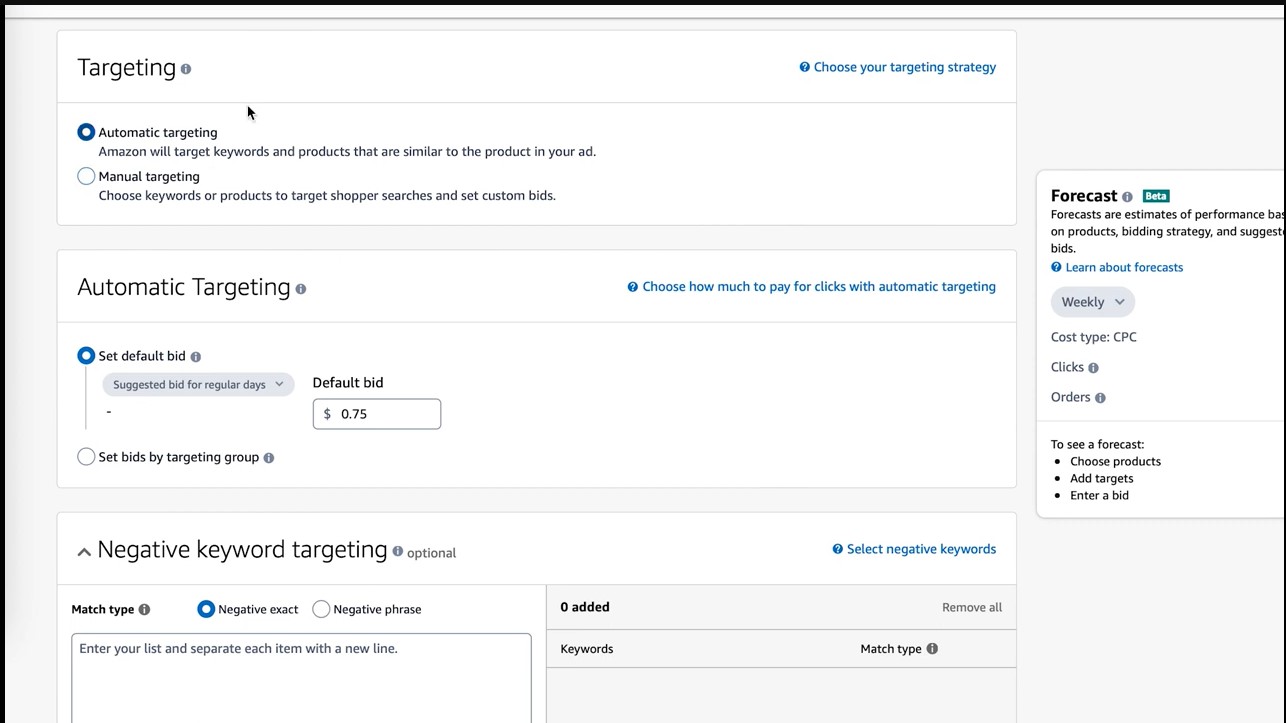
Select Campaign Details
Next, give your campaign a name and budget. A good rule of thumb is to start with a budget of at least $25 per day. Choose a duration of either continuous or for a fixed time period. For your first campaign, continuous is a good choice.
Choose Your Products
Add the ASINs or SKUs of the products you want to target. You can include up to 100 products in a single campaign. Focus on a small group of related products to start, so you can optimize the campaign before expanding to more products.
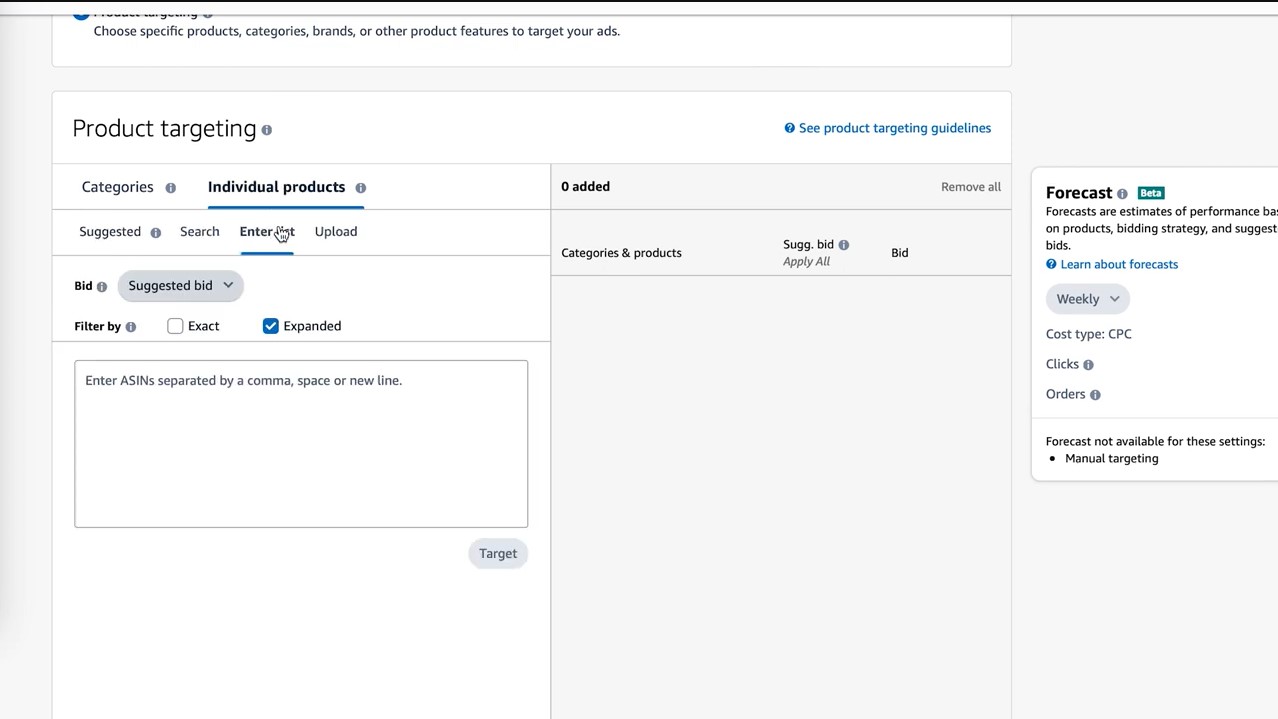
Review and Launch
Amazon will automatically generate suggested keywords and audiences for your campaign based on the products you selected. Review these and make any changes you want. When you’re satisfied, launch your campaign to start reaching targeted shoppers right away.
Optimize and Improve
Check on your campaign regularly to see how it’s performing. Look at metrics like impressions, clicks, conversion rate, and sales. Make changes to improve add or remove keywords and audiences, increase or decrease your budget, or edit product listings. Product targeting takes continuous optimization to maximize your results.
With the right audience targeting and content, product targeting campaigns can significantly boost traffic and sales. Start small, track your metrics, and optimize over time for the best performance. You’ll be reaching the perfect customers for your products in no time!
Optimizing your Product Targeting Ads on Amazon
Choose Relevant Keywords
To optimize your product targeting ads, focus on using relevant keywords that accurately describe your product. Think about what words your potential customers might actually search for to find a product like yours. Include product category, function, features, brand, and model names.
For example, if you’re selling a blue casual cotton dress, use keywords like “blue dress,” “casual dress,” “cotton dress,” as well as more specific terms like “short sleeve dress” or “knee length dress.” Also include words that refer to the style, cut or pattern of the dress like “A-line,” “shift,” or “floral print.”
Amazon allows you to use up to 5 keywords for your product ads, so choose them wisely based on potential search volume and relevance. Review the search terms report in your Amazon Seller Account to see what words customers are actually using to find your product.
Optimize Your Copy and Images
Well-written ad copy and high-quality images are key to catching customers’ attention and driving more traffic to your product listing. Focus your copy on the key benefits and features of your product using an enthusiastic and compelling tone. Keep your text brief, around 2 short sentences or a short paragraph.
Use eye-catching product images that show your item clearly against a plain white background. Make sure the main image shows the entire product so customers know exactly what they’re getting. Include close-up detail shots and lifestyle images when possible to give a better sense of your product in use.
Choose Relevant Product Targeting Types
Amazon lets you target ads to specific products, brands, categories or search terms. For the best results, choose targeting options that are highly relevant to your product. Target competing products or brands, or categories and subcategories that directly relate to your item. Broad search term targeting typically leads to lower click-through rates, so start narrowly focused.
Monitor your ad performance and make changes to improve your click-through rate and conversion rate. Adjust your keywords, copy, images or targeting to optimize your ads over time. With the right targeting and optimization, product ads can be an effective way to increase sales on Amazon.
Utilizing negative product targeting in Amazon
Negative product targeting allows you to exclude certain products from showing up as suggested or related items to your listing. This strategic method can help boost your product’s visibility and sales on Amazon.
As a seller, you want shoppers focused on your product, not distracted by competitors. By blocking certain products from appearing alongside yours, you refine the selection and gain more prominent placement. Say you sell a particular model of Bluetooth speaker. You could block suggestion of other brands’ comparable speakers to position yours as the top choice for customers.
To utilize negative product targeting, you will need to provide Amazon the ASINs (Amazon Standard Identification Number) of products you wish to block. You can find a product’s ASIN on the product detail page URL or by using a free ASIN lookup tool.
Once you have the ASINs, here are the steps to block products:
- Log in to Seller Central and go to Advertising > Negative Product Targeting.
- Click “Create targeting rule”. Select the product you want to target by entering its ASIN, UPC or keyword.
- Choose whether you want to target all products under a brand or only specific products. Enter ASINs of individual products or use brand name to block all products of a brand.
- Select the categories and subcategories where you want to block the products. You can choose from categories your product is listed under.
- Name your rule and save it. The rule will start blocking products within 1 hour.
- Check how your negative product targeting is impacting your product and make changes as needed. You can delete or edit rules at any time.
Negative product targeting is a powerful way to optimize your product placement and boost sales on Amazon. Be strategic with your choices and start with blocking your closest competitors. See how customers respond and make adjustments to continue improving your product’s visibility. With the right negative targeting in place, your product can reach more shoppers and sell more units.
Conclusion
You’ve learned the key steps to boosting your Amazon product sales through attribute targeting. By focusing on the product details that set you apart, you can reach high-intent customers and increase conversions.
To recap, start by determining what makes your product unique. This could be a special feature, patented technology, organic ingredients, or anything else that differentiates you from competitors. Emphasize these attributes in your product listings by using emotive and persuasive language, visuals like professional photos, and specific keywords.
Next, build your ad campaigns around these attributes. Use responsive search ads that prominently feature your key selling points. Bid on keywords related to your unique attributes and the benefits they provide. This helps ensure your ads are shown to people specifically looking for what you offer.
Finally, optimize your product detail page to highlight your key attributes. Place attribute information, visuals and persuasive copy “above the fold” where visitors see it first. Use consistent messaging across your title, bullets, description and images. Offer free trials, samples or demos when possible so customers can experience your product attributes firsthand.
By leveraging these strategic techniques, you can achieve product attribute targeting mastery. Your high-value, differentiated offerings will get noticed, desired and purchased by those looking for exactly what you sell. Sales and profits increase as you attract and convert ideal customers effortlessly.


